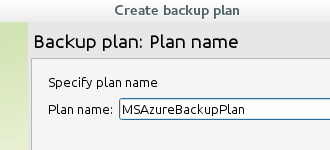

Note: It is recommended to set the “Sync Deleted Objects” option to be enabled for replicating standard (non-objectlock) buckets to standard (non-objectlock).Ĥ.1.4 You will see the source and destination buckets in the list of buckets to be synced. Optionally you can check the “Sync Deleted objects” box.Ĭlick on “Confirm Sync” to start syncing. The source and destination accounts should be the same. Then select the destination account and destination bucket. Please refer to Create a Bucket using Wasabi Console to create a new bucket if there is no existing bucket to be used.Ĥ.1.3 Select the source account and source bucket which you want to replicate. We will be using an existing bucket in us-west-1 for the below procedure. The below steps outline the procedure to enable bucket replication for an existing Wasabi bucket being used for backup by MBS in us-east-1 to another wasabi bucket in us-west-1. Note: Replicating buckets will incur additional storage costs based on the added storage consumption in the user’s Wasabi account.
#Cloudberry backup service name software#
Online Backup Ultimate Client Application software 7.6.1.69.MSP360 Management console version- 5.9.6.An active Wasabi Cloud Sync Manager (WCSM) account is required to use Bucket Replication.

The prerequisites for using WCSM with MSP360 to replicate backups are given below. MSP360 MBS software has been validated to restore backup data that has been replicated using WCSM. Bucket Replication using Wasabi Cloud Sync Manager (WCSM)īucket Replication is a feature of Wasabi Cloud Sync Manager that allows customers to copy objects from a storage bucket in a Wasabi region to a different bucket in the same or another Wasabi region of the same continent. Check the Enable Immutability checkbox, confirm enabling the feature in the following window, and click Save.Ĥ. In the Retention Policy tab, set the required GFS settings. Assign the backup destination created above as the cloud storage.ģ.9. On the required computer, click the gear icon and click show plans.ģ.8. In the RMM menu, select Remote Management.ģ.7. It can be enabled in the backup destinations and the backup plans by Administrators using the RMM for security reasons.ġ6. Note: The immutability option cannot be enabled by the backup agents. We need to assign the backup destination created above to the backup plans and enable immutability along with the GFS retention policy. Click Confirm to enable Immutability in the next window and click Save to add the backup destination.ģ.5 Assign it to the required companies and click Save.ģ.6. Create a new bucket or Select an existing Object Lock enabled bucket from the list and check the Allow Immutability (Governance) checkbox.ģ.4. In the Add Destination Bucket window, provide a Display Name. to edit the existing backup destination.ģ.3. Click the gear icon, select View Backup destinations.ģ.3 Click Add Destination Bucket to add a new Backup destination or. For more information, please click here.įollow the steps outlined below to make your backups immutable.ģ.1 Log in to the MSP Managed Backup Service portal.ģ.2 In the Storage Accounts, select the Wasabi account configured above. It must be enabled in the web console. To manage immutability, an Administrator should have the appropriate permissions. The immutability cannot be enabled in the backup agent. In order to use immutability, the software version of the backup agent should be 7.3.0 or later. MSP360 Managed Backup Service now supports configuring immutable backups. Hit Next when done.Ģ.7 Now, we can apply the storage to the Companies as needed, click Next and then click Save on the next screen.Ģ.8 At this point, when the end-user logs in to their Cloudberry/MSP360 Backup application and tries to create a new backup plan, they will see the Wasabi storage account as one of the options. Configuring Wasabi as a Storage AccountĢ.1 Log in to the MSP Managed Backup Service portal ( 2.2 Click on 'Storage' and then 'Storage Accounts' from the toolbar at the top.Ģ.3 Now, click on Add Account (right corner of the screen).Ģ.5 Enter a display name and your Wasabi account credentials (access key and secret key), and then click Save.Ģ.6 On this screen you can create a new bucket in one of the regions or choose one of the existing buckets. Active MSP360 Managed Backup Service account.Ģ.Convert your standard Wasabi Cloud backups on MSP360 to Immutable backups using WCSM.Bucket Replication using Wasabi Cloud Sync Manager (WCSM).Configuring Wasabi as a Storage Account.To use this product with Wasabi, follow the simple steps below to configure MSP360 Managed Backup Service with your Wasabi storage account. MSP360 (Cloudberry) Managed Backup Service (formerly CloudBerry) software is certified for use with Wasabi.


 0 kommentar(er)
0 kommentar(er)
